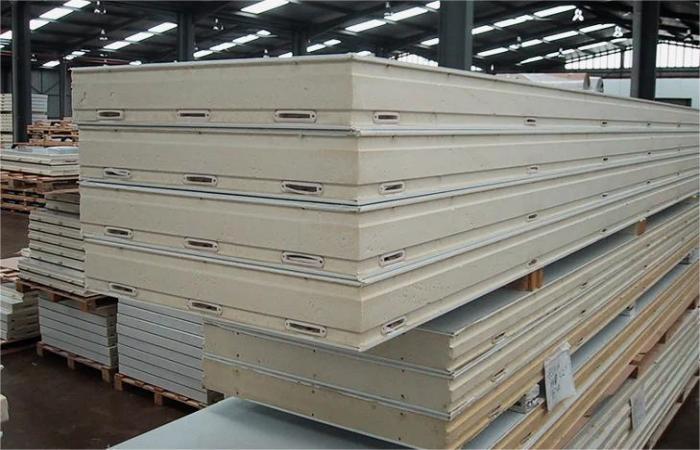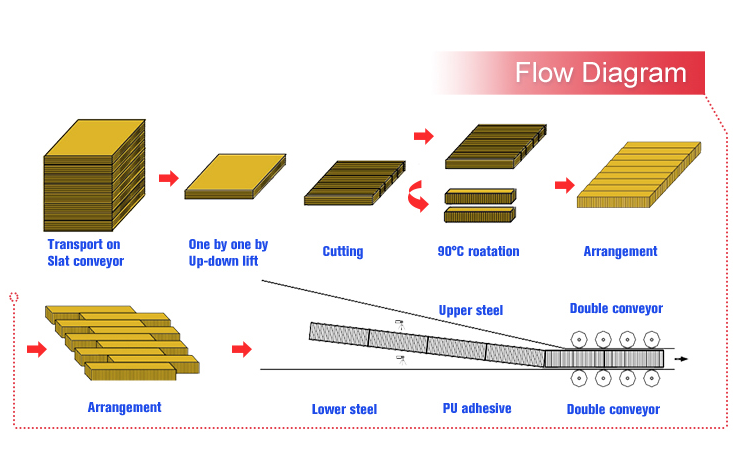Table of Contents

In the realm of construction materials, sandwich panels have emerged as a versatile and efficient option, offering a myriad of benefits for various applications. However, like any innovation, they come with their own set of drawbacks. In this article, we'll delve into the advantages and disadvantages of sandwich panels to provide a comprehensive understanding of their utility and limitations.
A sandwich panel is a construction panel comprising three layers - a core material sandwiched between two outer layers, or "skins," typically crafted from metal, plastic, or composite materials.
Sandwich panels serve as versatile components in construction, primarily employed for cladding building walls and roofs. Comprising a core of thermoregulating material encased between two layers of sheet metal, these panels contribute significantly to the thermal and acoustic performance of a structure. It's crucial to note that sandwich panels do not carry structural loads; instead, they function as curtain materials, while the structural integrity is upheld by a steel framework or a suitable carrier frame to which the panels are affixed.
Distinguished by the type of thermoregulating material employed within the core, sandwich panels are commonly categorized into variants featuring EPS (expanded polystyrene), mineral wool, and polyurethane (specifically PIR or polyisocyanurate). Each material offers distinct characteristics concerning thermal insulation, soundproofing capabilities, fire resistance, and overall weight. These variations enable builders and architects to select sandwich panels tailored to specific project requirements, balancing performance and practicality to achieve optimal building performance and occupant comfort.

Sandwich Panel Uses
The versatility of sandwich panels renders them indispensable across various industries:
-
Construction: Sandwich panels find extensive use in constructing walls, roofs, floors, and partitions in buildings. Their excellent insulation properties and structural strength facilitate efficient assembly and disassembly.
-
Transportation: Lightweight yet robust, sandwich panels are favored in the manufacturing of vehicles, aircraft, and boats. They contribute to weight reduction while providing durability for components like doors, floors, and walls.
-
Cold Storage: The insulation capabilities of sandwich panels make them ideal for cold storage rooms and warehouses. They help maintain consistent temperatures, ensuring energy efficiency and cost savings.
-
Cleanrooms: Industries requiring pristine environments, such as pharmaceuticals and electronics, utilize sandwich panels for constructing cleanrooms. These panels offer hygienic surfaces that are easy to clean and sterilize.
-
Portable Structures: Sandwich panels enable the creation of temporary offices, shelters, and exhibition stands. Their portability and ease of assembly make them perfect for outdoor events and construction sites.
Advantages of Sandwich Panels
Sandwich panels boast several advantages over traditional construction materials:
-
Lightweight: Easy to handle and transport, sandwich panels reduce overall structural weight, thus saving on material costs.
-
High Strength: Despite their lightness, sandwich panels exhibit impressive load-bearing capabilities, suitable for high-stress applications.
-
Thermal Insulation: With high thermal insulation values, sandwich panels contribute to energy efficiency in temperature-controlled environments.
-
Fire Resistance: Many sandwich panels are made from fire-resistant materials, enhancing safety in buildings requiring stringent fire regulations.
-
Acoustic Insulation: Sandwich panels effectively dampen noise, making them ideal for soundproofing rooms and buildings.
-
Durability: Resilient against harsh weather conditions and corrosion, sandwich panels require minimal maintenance and offer long-term reliability.
-
Aesthetic Appeal: Available in a range of colors and finishes, sandwich panels can enhance the visual appeal of buildings, offering customization options to match surrounding environments.

Disadvantages of Sandwich Panels
Despite their many advantages, sandwich panels have some limitations:
-
Cost: Customization and specialized finishes can escalate the cost of sandwich panels compared to other building materials.
-
Limited Sizes: Standard sizes and thicknesses may restrict design flexibility, necessitating additional cutting and fitting for unique applications.
-
Durability Issues: Improper installation or exposure to extreme weather can lead to damage, compromising the longevity of sandwich panels.
-
Fire Resistance Variation: Not all sandwich panels are inherently fire-resistant, posing risks in structures where fire safety is paramount.
-
Moisture Susceptibility: Poor sealing can result in moisture intrusion, affecting both structural integrity and insulation properties.
-
Recycling Challenges: The composite nature of sandwich panels complicates recycling and end-of-life management, posing environmental concerns.
In conclusion, sandwich panels offer a host of benefits that make them a preferred choice in modern construction and manufacturing. However, it's essential to weigh these advantages against the associated drawbacks to make informed decisions regarding their usage. As technology advances and environmental considerations become more pressing, addressing the challenges posed by sandwich panels will be crucial in maximizing their utility while minimizing their impact.

